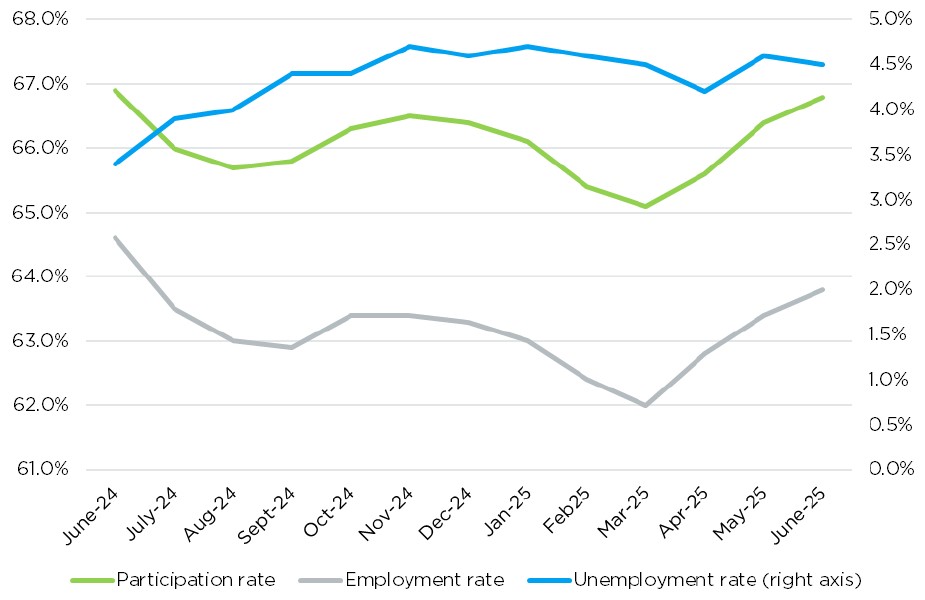Highlights – June 2025

Data visualization
Evolution of the key employment indicators over one year
 Sources: Statistics Canada, Table 14-10-0459-01, and Québec International.
Sources: Statistics Canada, Table 14-10-0459-01, and Québec International.
Overview of employment in major Canadian regions

Analysis
Employment above 480,000
According to Statistics Canada’s Labour Force Survey (LFS), the Québec City CMA’s labour market continued to grow in June, with most of its key indicators experiencing moderate growth. Employment increased by 4,000 jobs (+0.8%), while the labour force showed an increase of 0.8%, bringing the total to 500,000 people. In other words, more people integrated the labour market and found a job.
The unemployment rate, on the other hand, dropped slightly, reaching 4.5% (-0.1 percentage points [pp]) Meanwhile, the employment rate settled at 63.8%, a 0.4 pp increase. Overall, simultaneous growth in the labour force and the number of jobs caused the employment rate to go up and the unemployment rate to go down, reaffirming the enviable position of the Québec City CMA’s labour market when it comes to these indicators.
Employment stable over one year despite signs of slowing down
Compared to June 2024, the region showed a small increase in jobs (+1.1%). Labour force growth (+2.2%), along with the lower employment rate (-0.8 pp) and participation rate (-0.1%), was a key driver of the labour market’s evolution and resilience over the 12 past months.
Young graduates and the labour market: a fragile link
The Québec City CMA is characterized by a diverse labour market. However, like many regions, it faces challenges in terms of aligning education with real labour needs. This issue is especially visible with those aged 15 to 24 years old, who represent a significant portion of new graduates. In June 2025, based on non-seasonally adjusted data, this cohort showed the highest unemployment rate among all age categories (9.8%), which highlight the school-to-work transition difficulties faced by these individuals. Unemployment rate growth over one year for this age category (+3.5 pp) is also reflected in the overall population’s unemployment rate.
Rosalie Forgues
Economist
Québec International




